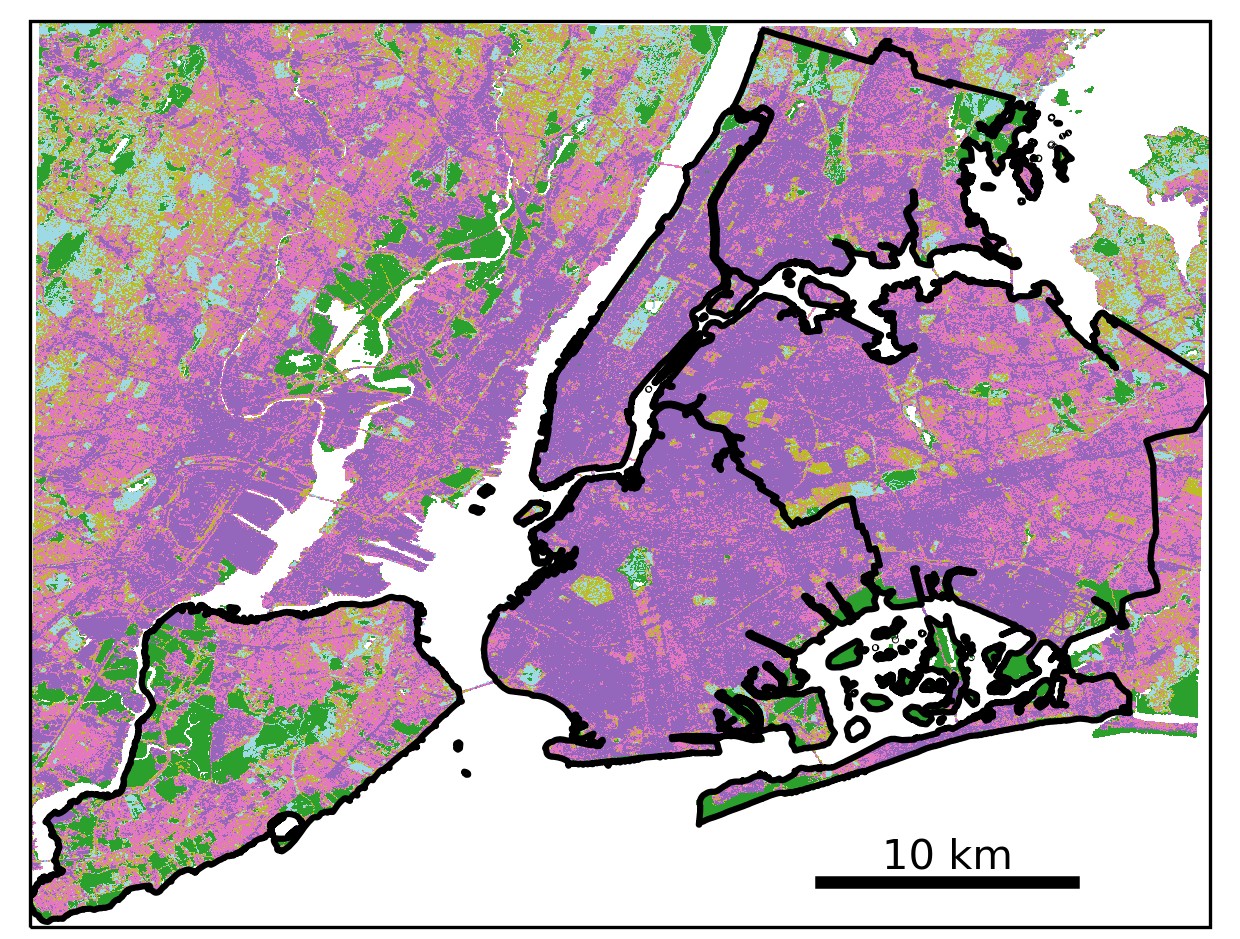According to a study of the vegetation in New York City and some of its nearby densely populated areas, photosynthesis by trees and grasses absorbs nearly all of the carbon emissions produced by cars, trucks, and buses on many summer days.

Researchers studied carbon uptake by vegetation in New York City and parts of the surrounding area. Greens show areas of contiguous forest, marsh or grassland. The rest is developed, with purple areas at highest intensity, but a surprising amount of vegetation is found there, too, along sidewalks, in backyards and other small features. Image Credit: Wei et al., Environmental Research Letters 2022
The unexpected outcome, which is supported by new hyper-local vegetation maps, emphasizes the undervalued significance of urban vegetation in the carbon cycle. The journal Environmental Research Letters recently published the study.
The researchers discovered significant amounts of previously unrecognized greenery dispersed in small spots, even in highly developed areas, using fine-grained vegetation maps. They discovered that it is playing an outsized role in the exchange of atmospheric gases.
They came to their conclusions by simulating the carbon absorption of every square foot of lawn and tree canopy and by analyzing data from instrument towers that continuously measure the carbon dioxide content of the air.
The findings are significant because more than 70% of human carbon dioxide emissions are produced in urban areas, with New York City being the largest emitter in the US and the third largest globally.
There is a lot more greenery than we thought, and that is what drives our conclusion. This tells us that the ecosystem matters in New York City, and if it matters here, it probably matters everywhere else.
DandanWei, Study Lead Author and Postdoctoral Researcher, Lamont-Doherty Earth Observatory, Columbia Climate School
The majority of prior studies have primarily focused on contiguous grassland and forest tracts when calculating the carbon uptake of vegetation, but these only make up about 10% of the metro area.
Wei and her coworkers included developed areas—the other 90% of the region not included in most models—using newly available aerial radar imagery of New York City that mapped vegetation in unprecedented 6-inch grids.
They could identify particular street trees, tiny backyard gardens, overgrown vacant lots, and other small features in this area. The 2,170 km2 study area’s peripheral regions—roughly one-third of it—were divided into 30-m grids, which is still a fine resolution.
Most people have assumed that New York City is just a grey box, that it is biogenically dead. But just because there is a concrete sidewalk somewhere doesn’t mean there is not also a tree that is shading it.
Roísín Commane, Study Co-Author and Atmospheric Chemist, Lamont-Doherty Earth Observatory, Columbia Climate School
According to the researchers, 170 km2, or about 22% of New York City, is covered by tree canopies, and 94 km2, or about 12%, is covered by grass. They examined the period from June to August 2018, when the metro area released a total of approximately 14.7 million tons of carbon dioxide, to determine how vegetation affected carbon emissions.
The energy for buildings and the power industry were the main sources, with road transport contributing about 1.2 million tons. According to Commane, CO2 levels are currently 417 parts per million on average throughout the world, but they frequently exceed 460 in New York.
Without all the vegetation, especially in the recently mapped developed areas, which, according to the study, accounted for nearly 85% of the daily carbon uptake, levels would be even higher. Total uptake on many summer days was up to 40% of the total emissions from all sources on a summer afternoon.
The scientists observed how carbon dioxide levels fluctuated throughout the day, rising in the morning along with traffic and other activities and then somewhat declining in the afternoon as grass and trees began to grow.
Of course, carbon uptake only happens during the local growing season, which in relatively chilly New York runs from mid-April to mid-October. According to Wei, vegetation probably absorbs more carbon in cities with warmer climates.
The number of trees in New York City is being actively increased. The team’s upcoming task will be to characterize coverage by species and assist in determining the relative merits of various species.
Fast-growing, hardy oak trees are a popular choice for this area, but studies have shown that they also emit a fair amount of isoprene, a volatile substance that reacts with vehicle emissions to produce polluting ozone. Although they have different growth traits, sweet gums, another common tree, produce a similar proportion of isoprene.
Wei added, “More trees are always going to be better, no matter what they are. But we could use an assessment of which ones are the best.”
Andrew Reinmann of the City University of New York and Luke Schiferl of Lamont-Doherty co-authored the study.
Journal Reference:
Wei, D., et al. (2022) High resolution modeling of vegetation reveals large summertime biogenic CO2 fluxes in New York City. Environmental Research Letters. doi:10.1088/1748-9326/aca68f.